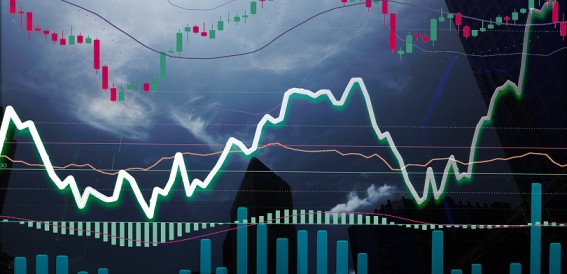Equity trading involves buying and selling company shares in the stock market. This type of trading allows investors to profit from share price movements. Understanding the types of equity trading can help investors make informed decisions and develop effective trading strategies.
What is Equity Trading?
Equity trading is the act of buying and selling shares of companies on the stock exchanges. These shares represent ownership in a company, and shareholders can earn returns through price appreciation and dividends. Online Equity trading can be done through various platforms, including traditional brokers and online trading accounts. An online demat account is essential for holding shares in electronic form, facilitating easy trading and investment management.
In equity trading, investors aim to capitalise on fluctuations in stock prices. They analyse market trends, company performance, economic indicators, and other factors to predict price movements. Successful equity trading requires knowledge, experience, and the ability to make quick decisions.
Begin your investing journey today. Your Demat account is the first step.
Types of Equity Trading
Understanding the different types of equity trading is crucial for investors to choose the strategy that best fits their financial goals and risk tolerance. Here are some common equity trading types:
Day Trading
Day trading involves buying and selling shares within the same trading day. Day traders capitalise on small price movements and aim to make multiple trades throughout the day. They do not hold any positions overnight, minimising the risk associated with market changes after trading hours.
Day trading requires a thorough understanding of market dynamics, quick decision-making skills, and managing stress. It’s a high-risk, high-reward strategy that demands constant attention to market movements and quick execution of trades.
Swing Trading
Swing trading involves holding shares for several days to weeks to benefit from short- to medium-term price movements. Swing traders aim to capture price swings and often use technical analysis to identify entry and exit points.
This type of trading is less intensive than day trading and allows traders to take advantage of broader market trends. Swing traders analyse charts, patterns, and market sentiment to make informed decisions. While it carries less risk than day trading, it still requires careful planning and monitoring of market conditions.
Position Trading
Position trading is a long-term trading strategy in which traders hold positions for several months to years. This approach is based on fundamental analysis, focusing on a company’s long-term prospects. Position traders aim to benefit from significant price movements over time.
They analyse a company’s financial health, industry trends, and economic conditions to identify stocks with strong growth potential. Position trading requires patience and a deep understanding of the market, as traders must be willing to endure short-term volatility for long-term gains.
Scalping
Scalping is a short-term trading strategy involving making numerous small daily trades to profit from minor price changes. Scalpers aim to “scalp” small profits from each trade, which can add up to significant gains over time. This strategy requires quick execution and a high level of market awareness.
Scalpers often use advanced trading tools and algorithms to execute trades efficiently. While the profit per trade is small, the high volume of trades can result in substantial overall returns. However, scalping requires constant attention to market movements and can be highly stressful.
Momentum Trading
Momentum trading involves buying stocks trending upward and selling them when they lose momentum. Traders using this strategy believe that stocks moving strongly in one direction will continue to do so for some time. Momentum traders rely heavily on technical analysis and market sentiment to identify potential trades.
They look for stocks with high trading volumes, positive news, and strong price movements. This strategy requires quick decision-making and the ability to act on market signals promptly.
Algorithmic Trading
Algorithmic trading, or algo trading, uses computer programs to execute trades based on predefined criteria. These algorithms can analyse market data and execute trades at high speeds and frequencies, exploiting market inefficiencies.
Institutional investors and hedge funds commonly use algorithmic trading, which is accessible to individual traders through various platforms. This type of trading requires technical expertise and access to advanced trading software. It offers the advantage of eliminating human emotions from trading decisions and can execute complex strategies precisely.
High-Frequency Trading (HFT)
High-frequency trading is a subset of algorithmic trading that involves executing many orders at extremely high speeds. HFT firms use powerful computers and sophisticated algorithms to capitalise on short-term market inefficiencies.
HFT strategies often involve making tiny profits on each trade, but the high volume of trades can result in significant overall gains. HFT requires substantial investment in technology and infrastructure, making it more suitable for large financial institutions. It has been controversial due to concerns about market fairness and stability.
Long-Term Investing
Long-term investing involves buying and holding stocks for an extended period, typically several years or more. This strategy is based on the belief that the stock market will grow over time, and high-quality stocks will appreciate in value.
Long-term investors focus on the fundamentals of the companies they invest in, such as earnings growth, competitive advantage, and management quality. This approach requires patience and a long-term perspective, as it aims to benefit from the overall growth of the economy and the companies within it.
Conclusion
Understanding the different types of equity trading is essential for any investor looking to navigate the stock market successfully. Each equity trading type has its own set of strategies, risks, and rewards.
By leveraging a demat account online, investors can easily manage their portfolios and execute trades efficiently. Whether one prefers the rapid pace of day trading or the steady approach of long-term investing, understanding these candlestick types and trading strategies can help make informed and profitable decisions in online share trading.











